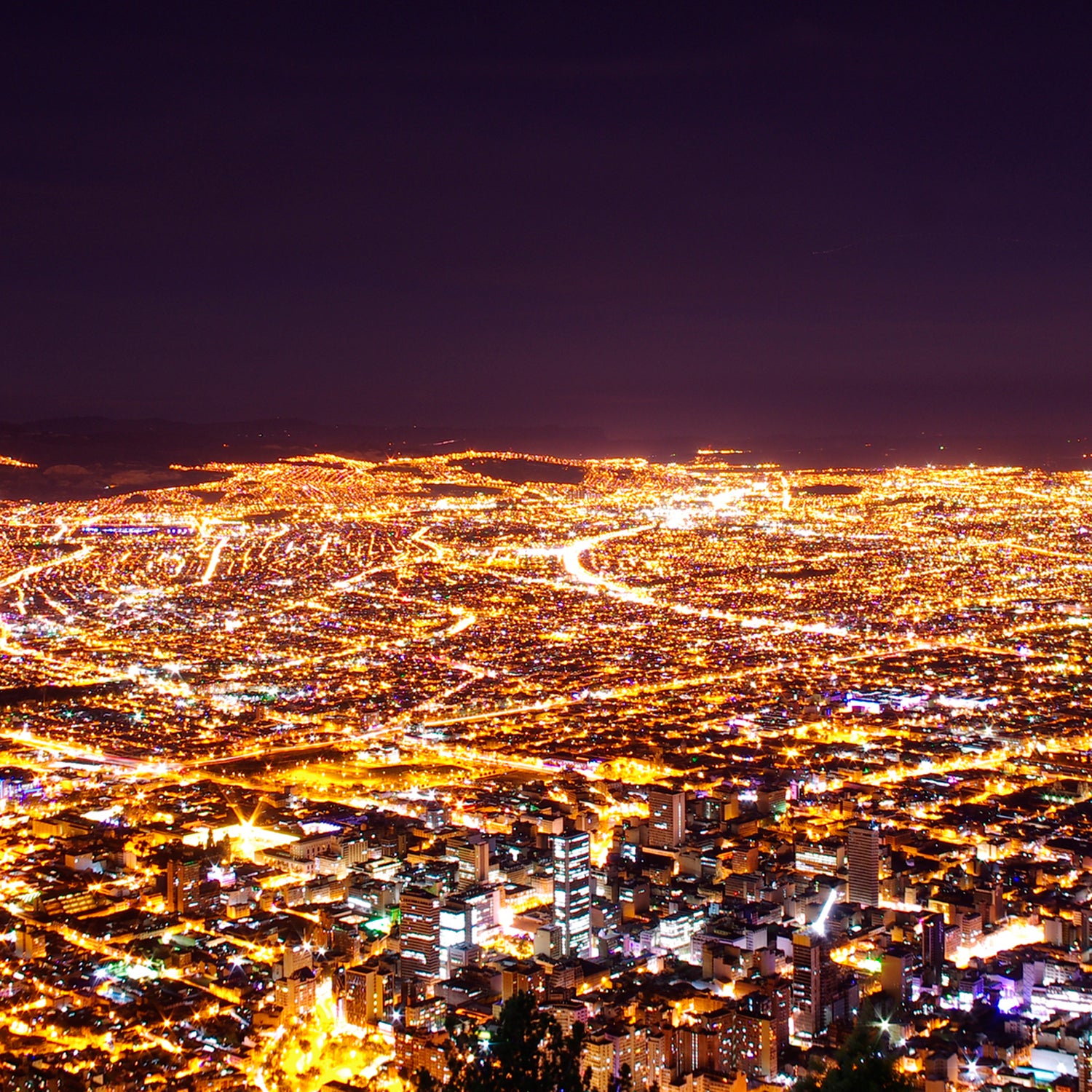On May 24, 2015, at 3 a.m., sat on a ridge overlooking the gleaming lights of Telluride, Colorado. One by one, blocks of streetlamps winked off far below. Canales had convinced many residents to turn off their lights as part of a special event during Mountainfilm, the annual outdoors-focused movie festival. He also persuaded the town’s maintenance department to flip the switches to all of the municipal lights.
“No town has ever turned the lights off,” he says. “By doing this, it makes a statement that we control our technology. It’s here to serve us. We’re not in servitude of it.”
About 80 people gathered downtown in the middle of the night to experience a sliver of what every generation before our grandparents knew intimately as a birthright: darkness. It was a milestone in the growing movement to preserve the night sky.
By any estimate, it’s a losing battle. According to a study in released today, 99 percent of the population of the United States lives under a night sky polluted by artificial lights in places like parking lots, gas stations, streets, and backyards.
This results in more than the loss of a nice view of the stars—there’s growing evidence that light pollution has huge impacts on human health, largely by disrupting our circadian rhythm, the 24-hour cycle of activity and rest that virtually all plants and animals have evolved to follow. Recent research suggests that messing with the circadian rhythm can decrease longevity, accelerate aging, compromise reproductive function, and weaken the immune system.
Light pollution is also terrible for wildlife. It compromises birds’ ability to hunt and use the stars and moon to migrate at night, and coastal lights fatally disorient millions of sea turtle hatchlings every year.
Astronomers have complained about excess light as early as the late 1800s, when some of the first streetlamps began to significantly obscure the night sky. But recently the problem has grown so bad it has inspired a movement of astronomy nerds, amateur stargazers, and wilderness lovers rallying to preserve darkness.
“It’s not like air pollution or water pollution where you can stop the polluting but it takes a while for the environment to flush the pollutant out,” says John Barentine, a bespectacled astronomy PhD and program manager for the International Dark-Sky Association, an Arizona-based non-profit. “It’s literally something where if we wanted to, we could change it overnight.”
The recent revolution in lighting technology, including highly efficient white LED lights and the Internet of Things—in which everyday objects connect to each other through the Internet to save resources and time—are allowing us to more skillfully light our spaces, both inside and out. Numerous cities, including Los Angeles, Chicago, New York, Copenhagen, and Shanghai have recently retrofitted or are in the process of retrofitting old streetlamps with new LEDs. The new technology appears brighter than similar wattages in aging high-pressure sodium streetlamps, which means they can be dimmed without compromising visibility. They can also be connected to city-wide networks and individually programmed to turn on, turn off, dim, and change color based on their location and the time of day. The International Dark-Sky Association predicts most big cities will retrofit streetlamps with LEDs in the next five years.
“It’s a once-in-a-century kind of thing and truly the only parallel in our history was the introduction of electric light about 130 years ago,” says John Barentine. “There’s simultaneously this sense of promise because we’ll be able to better control how we’re using this light, where we’re putting it, and in what quantity. But it could be a Pandora’s box too because there are some negative effects associated with these lights.”
One danger of LEDs is that they typically emit a white light with a high blue content, a wavelength that suppresses the hormone melatonin, which signals its time to rest. (Suppressing melatonin at night can disrupt the circadian rhythm.) In some places, citizens have already complained of LED streetlamps’ brightness. In Davis, California, locals called them “zombie lights” and “prison lighting” when they were first installed. (Davis reduced the wattages of the streetlights in residential neighborhoods, to the appreciation of residents.) There’s also the concern that when something costs less, people typically use more of it.
Many grassroots light pollution activists are working to change city light ordinances to better regulate outdoor lighting. Samuel Singer, a young, energetic, bearded astronomy Ph.D. and founder of non-profit Wyoming Stargazing, is one of them. The Jackson, Wyoming, native is actively trying to improve the town’s exterior lighting standard. Despite its remote and relatively wild location, downtown Jackson has light pollution comparable to Flagstaff, Arizona, a community more than six times its size. (This is partly because Flagstaff has exceptional lighting ordinances and partly because Jackson has acorn-style streetlights that produce a lot of light.)
Over three years, Singer has worked nights taking people out on stargazing trips and writing a new lighting standard that is currently up for review by county officials, who are slated to vote on it this summer. If passed, the proposed standard would require shielding for exterior lights, cap the total amount of lumens per acre, and even guide outdoor lights’ color temperature away from harsh blue wavelengths.
Although there is strong support for darker skies in Jackson, new lighting standards do attract opposition. Some people object to being told that they need to put lights on timers, add motions sensors, or shade their exterior fixtures. But dark sky proponents argue that lighting trespass, in which a strong light spills over onto a neighbor’s property, affects others’ enjoyment of their own private property.
“Especially in states like Wyoming, there’s a lot of that rugged individualism and a distaste for laws that seem to impact personal freedoms,” says Samuel Singer. “But this is not one of those pieces of legislation. We’re not trying to take anybody’s rights away.”
Perhaps the most underestimated factor is much simpler: people are afraid of the dark.
“There are unfortunately a lot of misperceptions we have to dispel, the biggest of which is more light means greater safety,” says Singer. Research suggests that there is no correlation between brightening streets and lowering crime. Some cities, such as Bristol, England, have actually reduced light pollution and crime at the same time. (Some experts hypothesize that excess lighting actually shows what you have to steal and that pockets of brightly lit areas actually make it harder to see in the dark.)
“The dark doesn’t have to be a scary place,” says Singer. “It can be a really safe and beautiful place.”
Proving that point is another main strategy among light pollution activists. The International Dark-Sky Association has designated dozens of parks, communities and other entities as dark sky places for their exceptional night skies and exemplary lighting practices. Visitors can now gaze up at saltier skies in places as disparate as Eifel National Park in Germany; Horseshoe Bay, Texas, and Canyonlands National Park in Utah. Last fall, the first Asian dark sky park was designated in South Korea, and in January, the Cosmic Campground in the Gila National Forest of southwestern New Mexico was designated the first Dark Sky Sanctuary in the U.S.
“Once people are aware of the issues, they understand the seriousness of it,” says John Barentine. “You show them how easy the solutions are and nine times out of ten they are on board.”


